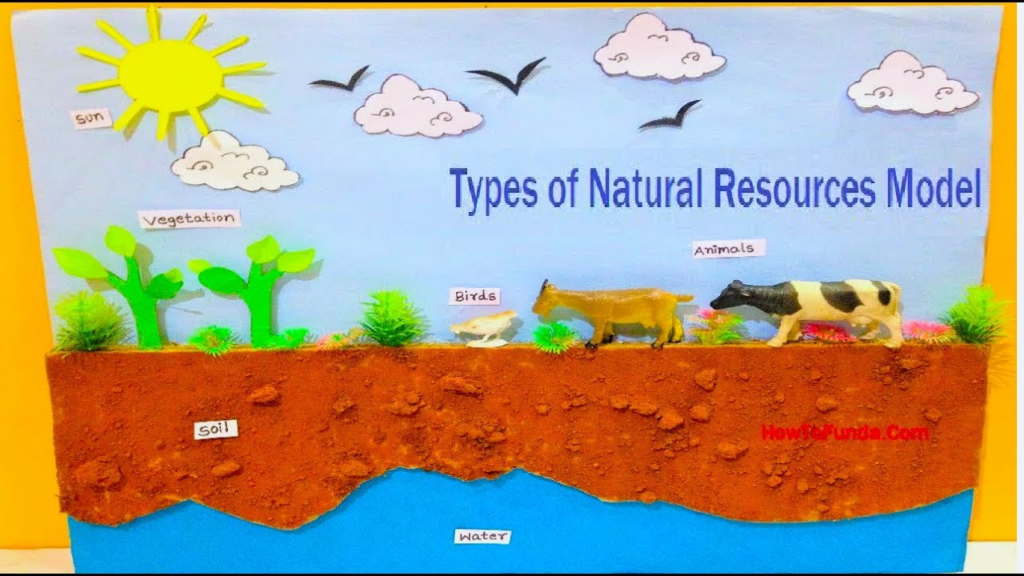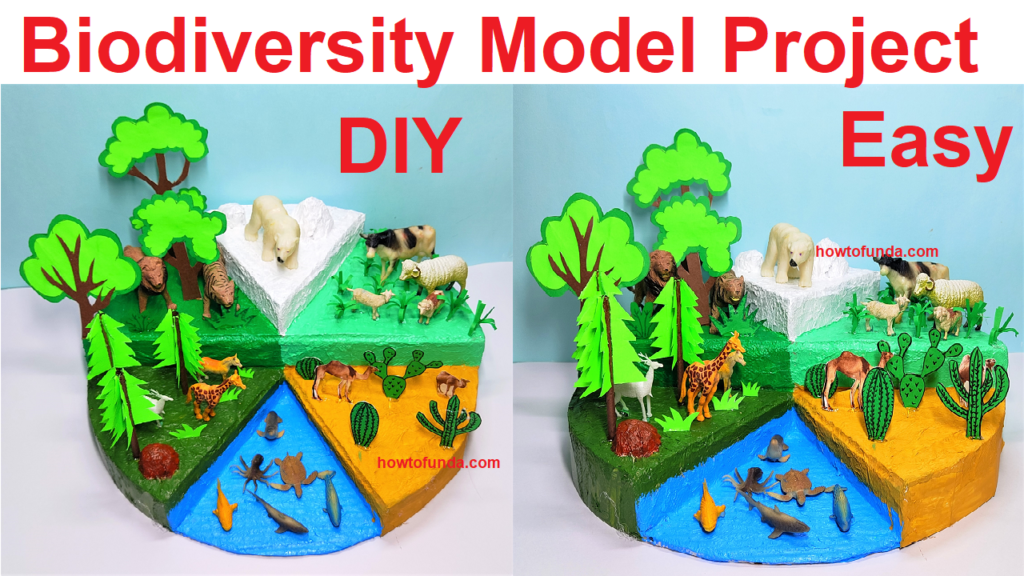Contents:
Introduction
- Types of Natural Resources
- Importance of Conservation
- Methods of Conservation
- Water Conservation
- Soil Conservation
- Forest Conservation
- Wildlife Conservation
- Energy Conservation
- Role of Technology in Conservation
- Government Policies and Initiatives
- Case Studies
- Impact of Human Activities on Natural Resources
- Sustainable Practices for Individuals
- Conclusion
- References
1. Introduction
Natural resources are materials or substances that occur naturally within the environment and are essential for the survival and development of life on Earth.

This project aims to explore the importance of conserving natural resources, various methods of conservation, and the role of technology and policies in ensuring sustainable use.
2. Types of Natural Resources
Natural resources are classified into two main categories:
2.1. Renewable Resources

- Examples: Solar energy, wind energy, water, biomass.
- Characteristics: Can be replenished naturally over time.
2.2. Non-Renewable Resources
- Examples: Fossil fuels (coal, oil, natural gas), minerals, metals.
- Characteristics: Finite resources that do not regenerate on a human timescale.
3. Importance of Conservation

3.1. Environmental Protection
Conserving natural resources helps protect ecosystems and biodiversity, maintaining balance in the environment.
3.2. Sustainable Development
Ensures that resources are available for future generations, promoting long-term economic and social development.
3.3. Resource Efficiency
Reduces waste and promotes efficient use of resources, minimizing environmental impact.
3.4. Mitigating Climate Change
Conservation practices reduce greenhouse gas emissions, helping to combat global warming and climate change.
4. Methods of Conservation

4.1. Water Conservation
- Techniques: Rainwater harvesting, drip irrigation, fixing leaks, using water-efficient appliances.
- Benefits: Ensures sustainable water supply, reduces water wastage, protects aquatic ecosystems.
4.2. Soil Conservation
- Techniques: Crop rotation, contour plowing, terracing, using cover crops.
- Benefits: Prevents soil erosion, maintains soil fertility, supports sustainable agriculture.
4.3. Forest Conservation

- Techniques: Afforestation, reforestation, sustainable logging, protecting natural habitats.
- Benefits: Preserves biodiversity, maintains the water cycle, reduces carbon dioxide levels.
4.4. Wildlife Conservation

- Techniques: Creating wildlife reserves, anti-poaching measures, habitat restoration, captive breeding programs.
- Benefits: Protects endangered species, maintains ecological balance, promotes biodiversity.
4.5. Energy Conservation

- Techniques: Using renewable energy sources, improving energy efficiency, reducing energy consumption.
- Benefits: Reduces reliance on fossil fuels, decreases greenhouse gas emissions, promotes sustainable energy use.
5. Role of Technology in Conservation
5.1. Remote Sensing and GIS
Used for monitoring and managing natural resources, tracking environmental changes, and planning conservation strategies.
5.2. Renewable Energy Technologies
Solar panels, wind turbines, and bioenergy systems help reduce dependence on non-renewable resources and lower environmental impact.
5.3. Water Purification Technologies
Advanced filtration and desalination techniques ensure clean and safe water, supporting water conservation efforts.
5.4. Agricultural Innovations
Techniques like precision farming, hydroponics, and genetically modified crops enhance resource efficiency and sustainable farming practices.
6. Government Policies and Initiatives
6.1. National Policies
- Examples: National Wildlife Action Plan, National Water Policy, Renewable Energy Policy.
- Objectives: Promote sustainable resource management, protect natural habitats, and support conservation efforts.
6.2. International Agreements
- Examples: Paris Agreement, Convention on Biological Diversity, Ramsar Convention.
- Objectives: Foster global cooperation, set conservation targets, and ensure sustainable use of resources.
7. Case Studies
7.1. Success Stories
- Example: Chipko Movement in India, which aimed to protect forests through community participation.
- Impact: Raised awareness about the importance of forests and led to stronger forest conservation policies.
7.2. Lessons Learned
- Example: Overexploitation of the Aral Sea leading to severe ecological and economic consequences.
- Lesson: The need for sustainable water management practices to prevent resource depletion.
8. Impact of Human Activities on Natural Resources
8.1. Deforestation
- Causes: Logging, agriculture, urbanization.
- Impact: Loss of biodiversity, disruption of water cycles, increased greenhouse gas emissions.
8.2. Pollution
- Causes: Industrial discharges, agricultural runoff, plastic waste.
- Impact: Contamination of air, water, and soil; adverse health effects; harm to wildlife.
8.3. Overfishing
- Causes: Unsustainable fishing practices, high demand for seafood.
- Impact: Depletion of fish populations, disruption of marine ecosystems, economic losses.
9. Sustainable Practices for Individuals
9.1. Reduce, Reuse, Recycle
- Practices: Minimizing waste, reusing materials, recycling products.
- Benefits: Conserves resources, reduces pollution, promotes environmental sustainability.
9.2. Energy Conservation at Home
- Practices: Using energy-efficient appliances, turning off lights when not in use, insulating homes.
- Benefits: Lowers energy bills, reduces carbon footprint, supports sustainable energy use.
9.3. Water-Saving Measures
- Practices: Fixing leaks, using low-flow fixtures, collecting rainwater for gardening.
- Benefits: Ensures sustainable water use, protects water resources, reduces water bills.
9.4. Supporting Sustainable Products
- Practices: Buying locally produced goods, choosing eco-friendly products, reducing single-use plastics.
- Benefits: Supports sustainable production, reduces environmental impact, promotes responsible consumption.
10. Conclusion
The conservation of natural resources is vital for sustaining life on Earth and ensuring a healthy environment for future generations.
Through understanding the importance of conservation, adopting sustainable practices, and supporting technological and policy initiatives, we can collectively work towards preserving our planet’s precious resources.

